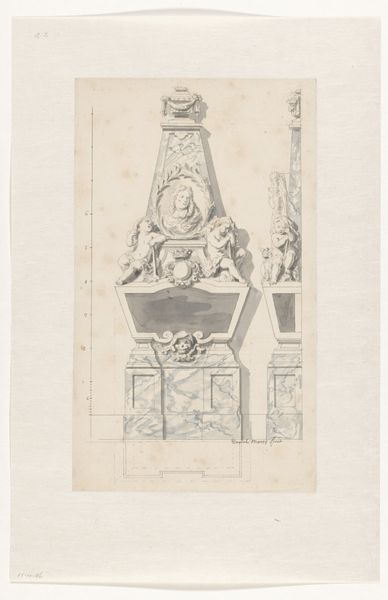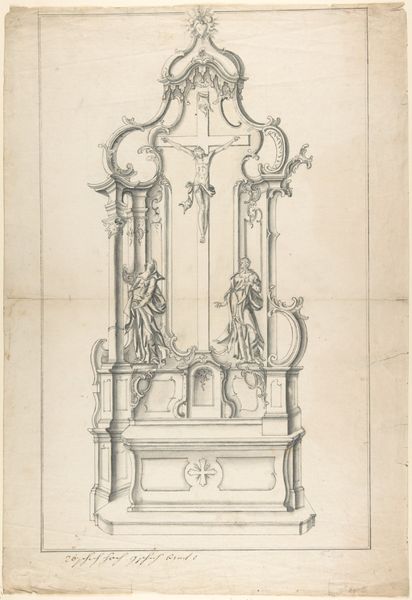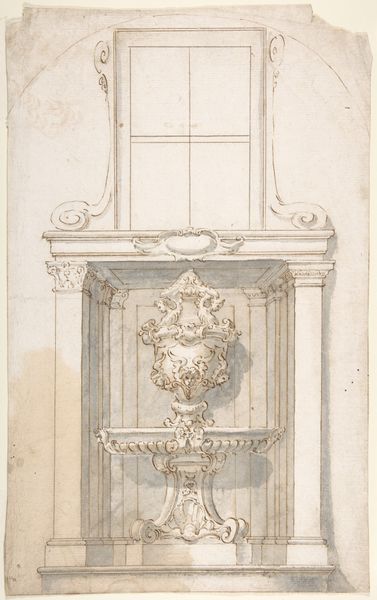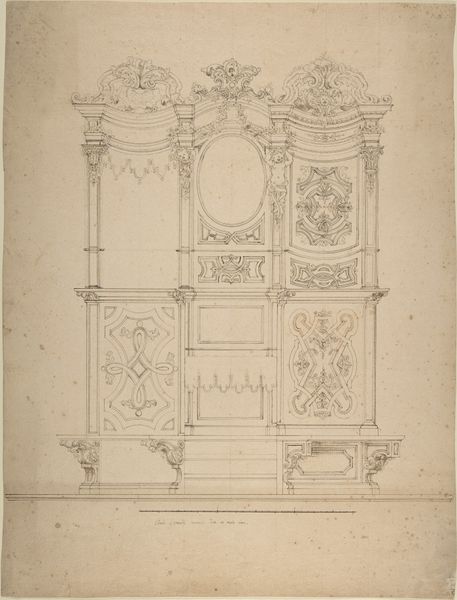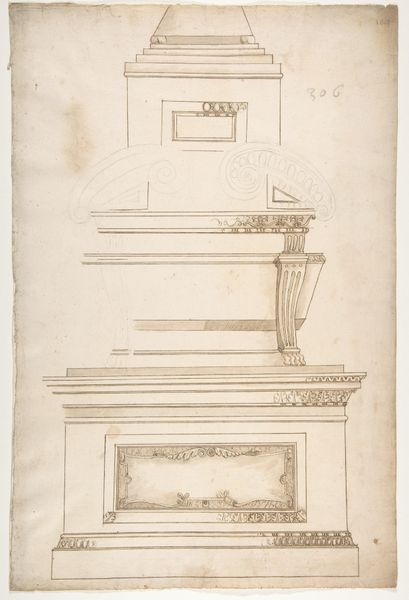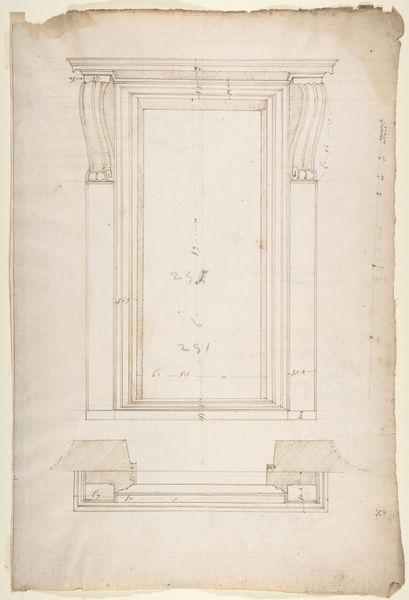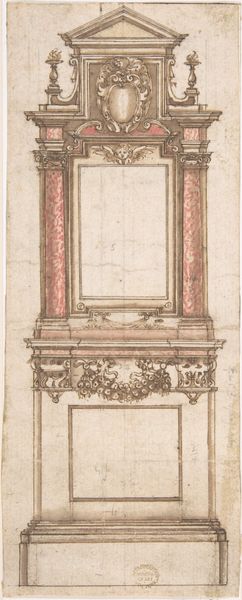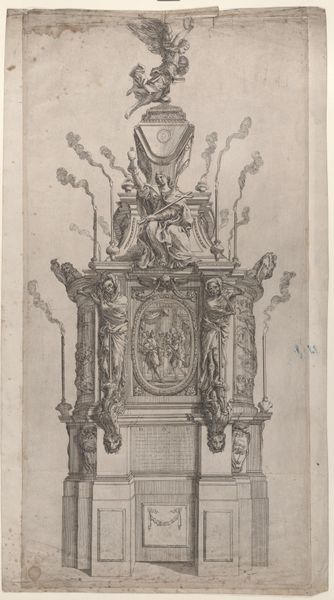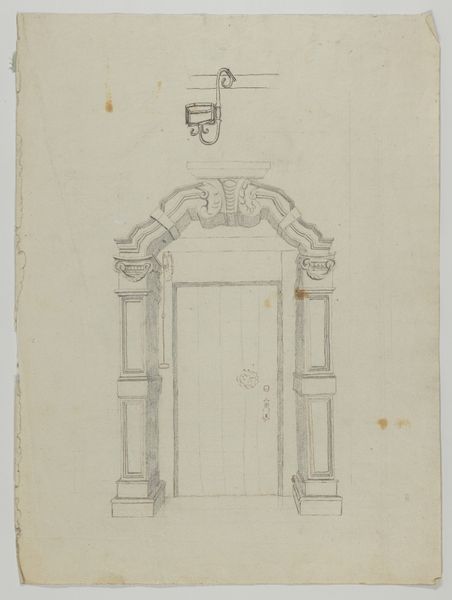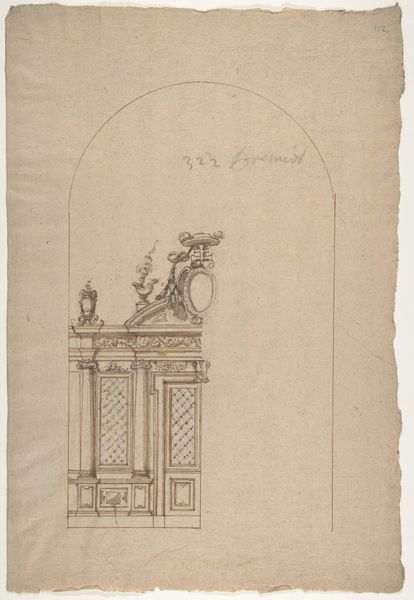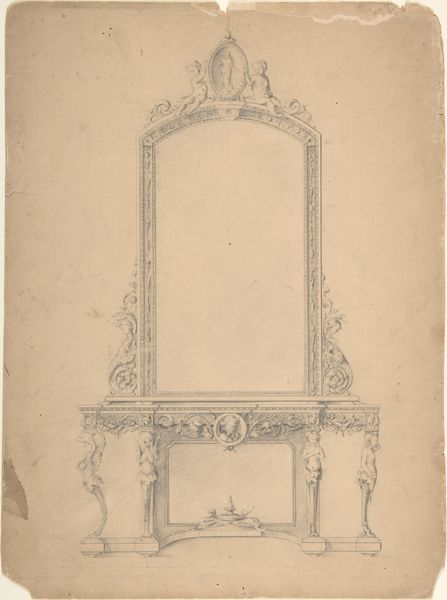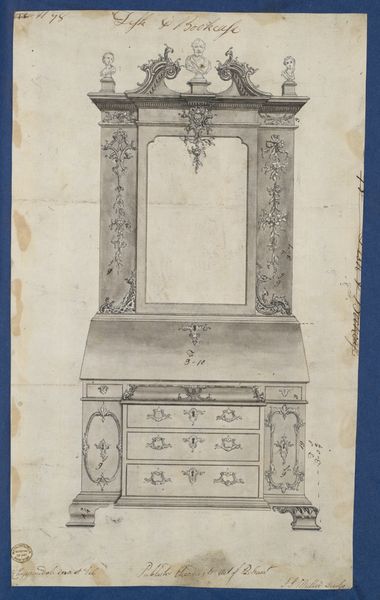
drawing, paper, pencil, pen
#
drawing
#
aged paper
#
toned paper
#
light pencil work
#
quirky sketch
#
baroque
#
old engraving style
#
paper
#
personal sketchbook
#
ink drawing experimentation
#
pen-ink sketch
#
pencil
#
sketchbook drawing
#
pen
#
decorative-art
#
sketchbook art
Dimensions: height 392 mm, width 260 mm
Copyright: Rijks Museum: Open Domain
This is a design for a mourning escutcheon, made by Daniël Marot, likely in the Netherlands during the late 17th or early 18th century. Escutcheons like this one were temporary displays of heraldry, celebrating the life of a recently deceased member of the nobility. Marot's design combines the visual codes of family, status, and death. Note the central crest, which would have displayed the coat of arms of the deceased. The helmet and weaponry at the top signify rank and martial prowess. Skulls, laurel, and drapery speak to the passing of life. Designs like this were temporary and theatrical, but they were also carefully regulated by institutions concerned with social status. What might archives related to Dutch aristocratic families tell us about the commissioning and display of works like this? How did display relate to social status? These are the kinds of questions a social historian brings to the interpretation of art.
Comments
No comments
Be the first to comment and join the conversation on the ultimate creative platform.
